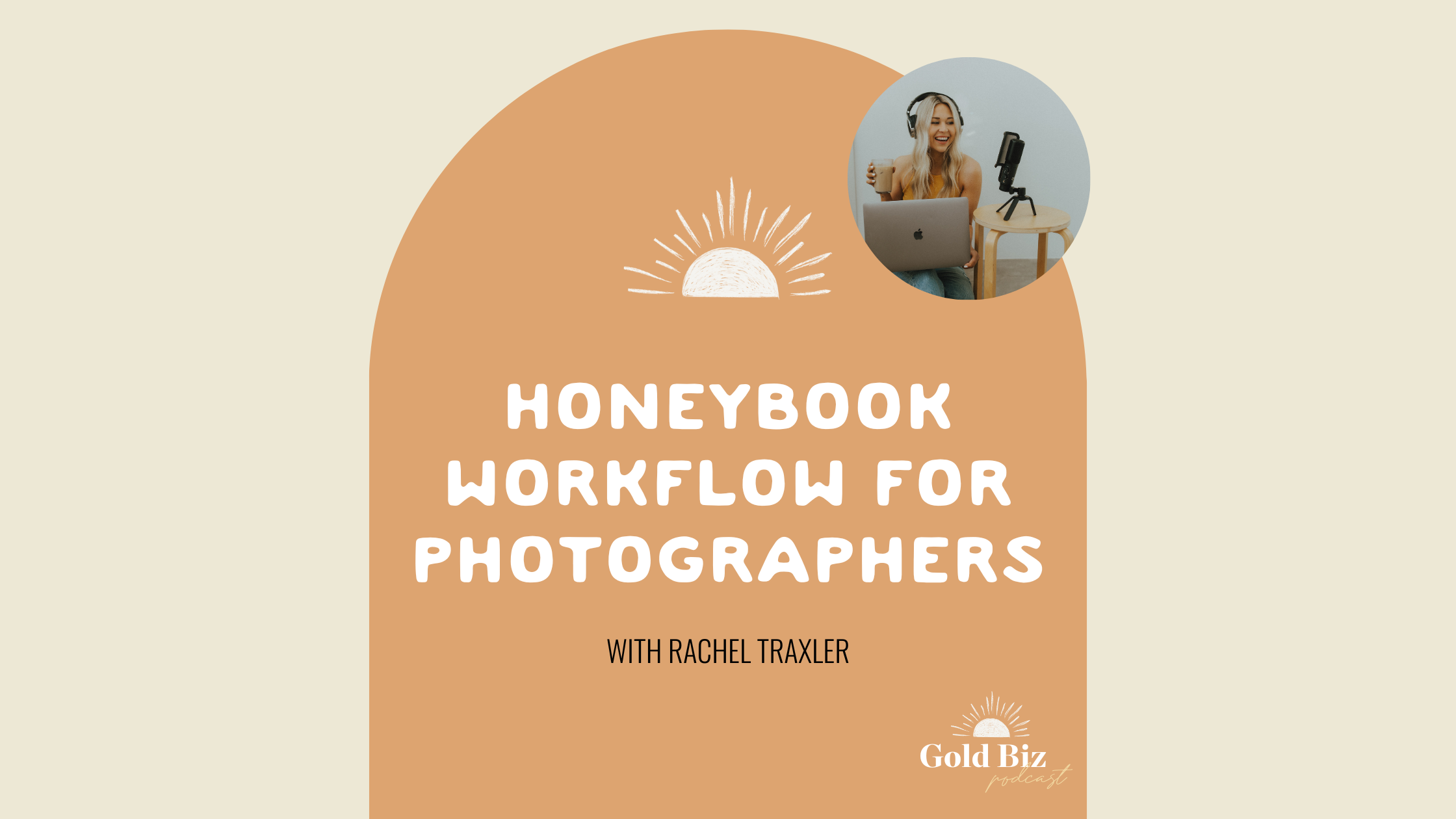Many tend to overlook or underestimate the importance of a thorough workflow, assuming that a welcome guide or a few checkpoints suffice. However, know that a truly robust client experience requires more.
In this post, we’ll explore the four pivotal phases that every effective workflow should encompass. By understanding and implementing these phases, you’ll enhance your client interactions, establish stronger connections, and ensure a seamless and satisfying experience for both you and your clients.
There are four indispensable phases of your workflow, from initial inquiry to successful delivery and beyond. While I prefer HoneyBook, feel free to use your preferred platform. The key is to divide your workflow into well-defined phases to ensure a seamless and efficient client experience.
Phase 1: The onboarding phase
Once your client has officially booked your services, it’s time to initiate the onboarding process, marking the beginning of your automated workflow. The onboarding phase is essential for creating a positive and lasting impression on your clients. It’s essential to strike the right balance between providing enough information and avoiding overwhelming them.
Customization plays a significant role during the booking phase, as different clients may have varied requirements. Whether you’re creating custom proposals or offering standard pricing, this phase requires a more hands-on approach. To master the art of effective onboarding, consider enrolling in our Inquiry to Income course, where we cover the process in detail.
To prevent buyer’s remorse, your onboarding package should be clear, concise, and welcoming. Avoid bombarding clients with too much information all at once. Instead, provide them with the right information at the appropriate times throughout the process. Many rely solely on a welcome guide, assuming it covers everything. However, a dense welcome guide can be overwhelming. The key is delivering relevant information precisely when your clients need it, ensuring a seamless and stress-free experience.
When crafting client guides or onboarding materials, striking a balance is key. While it’s essential to provide comprehensive information about your services and what clients can expect, simplicity is equally important to avoid overwhelming them. Many photographers encounter situations where clients miss important details buried in lengthy welcome guides. To overcome this, my top recommendation is to offer precisely what they need during the onboarding phase, ensuring they feel confident in their decision to invest in your photography services.
Phase 2: The nurturing phase
The second phase of your workflow is the necessary nurturing phase. After successfully onboarding your clients and completing their engagement session, a significant time gap may occur before their actual wedding day, ranging from a few months to a year or more. During this period, it’s essential to nurture, serve, educate, and prepare your clients effectively.
To do this, consider providing valuable resources that meet their specific needs at that particular time. For instance, you can send emails discussing when to order save the dates, tips on labeling envelopes, or anything related to their wedding preparations. These thoughtful gestures demonstrate your commitment to serving them well.
Furthermore, the nurturing period is a great time to mold your clients into your ideal clientele. You may discreetly guide people toward your unique approach and style by creating personalized email sequences. This way, you won’t have to put in as much work in the future to market to or attract new ideal clientele. During the nurture phase, meeting your clients where they are creates a deep bond and guarantees they have a memorable and stress-free experience with your services.
Phase 3: The delivery phase
We’ve covered the first two phases: onboarding and nurturing. Now, let’s dive into phase three, the delivery phase. During the delivery phase, it’s the much-awaited moment for your clients—their wedding time! This stage is all about delivering on the promises and preparations made during the onboarding and nurturing phases. You’ll witness the culmination of your efforts as your clients’ dreams come to life. The delivery phase marks the pinnacle of your services, so ensuring everything runs smoothly will leave a lasting impression on your clients.
In the weeks leading up to your client’s wedding, the preparation and nurturing process is important. This period involves ensuring that your clients are well-prepped and informed for their big day. You must deliver the experience you promised, both during the wedding and afterward, as the delivery phase is what they will physically remember. While the previous phases involve online and digital communication, the delivery phase takes place in person, making it essential to create a solid and memorable experience.
To achieve this, you must know the promises you made to your clients and ensure that you can consistently deliver on those promises. The key is to maintain the same level of excellence you’ve promised throughout the entire journey. This will leave a lasting impression and foster trust with your clients.
Phase 4: Offboarding phase
The final phase, the offboarding phase, is often overlooked but equally significant. How you conclude your client’s experience is just as important, if not more so, than how you began it. Don’t let all your efforts leading up to the wedding go to waste by neglecting the offboarding process. A strong offboarding process ensures that your clients’ departure is as smooth and positive as possible, leaving them with a sense of satisfaction and delight.
It’s during the offboarding phase that you have an opportunity to gather valuable client testimonials and reviews. Don’t limit your requests for reviews to this stage alone; consider incorporating them throughout the entire process. By doing so, you increase the likelihood of receiving authentic and timely feedback. In crafting a comprehensive workflow, it’s important to extend your efforts beyond the wedding day, even up to a year later, including their anniversary. Organizing this in HoneyBook without archiving the project can be managed efficiently.
Final thoughts: Honeybook Workflow for Photographers
To simplify the process, break your workflow into four phases: onboarding, nurturing, delivery, and offboarding. By doing so, you’ll avoid feeling overwhelmed by the term “workflow.” These phases serve as a guide to ensure a remarkable client experience.
Recapping the phases:
- Onboarding: The initial phase where you welcome and set expectations.
- Nurturing: Continue supporting and educating clients throughout the journey.
- Delivery: The culmination of your preparations, creating memorable experiences in person.
- Offboarding: Conclude with care, gather testimonials, and ensure a smooth departure.
By adopting these four phases, you’ll elevate your services and establish a lasting connection with your clients, ensuring your workflow is both effective and enjoyable.
If you’d like to see a video walkthrough of my HoneyBook backend and understand how I implement this workflow, simply text “connect” to 8882924864. I’m confident it will be beneficial for you, just as it has been for me and my students. Breaking down the workflow into smaller parts makes it less intimidating and more manageable.


comment your thoughts below!